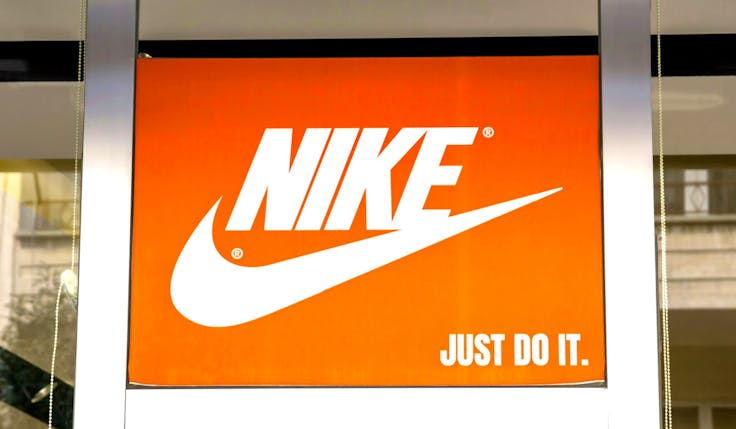Social proof and scarcity helped Monzo soar to success
From the choice of hot coral for its visual identity to the decision to limit access at launch, tapping into behavioural science has helped Monzo attain profitability.

It’s highly likely that, at some point over the last few years, you’ll have seen one of Monzo’s day-glo pink bank cards in the hand of the person in front of you at the checkout.
Chances are, over the same timespan, far more people in front will have paid with a Barclays card. Or a TSB card. But you wouldn’t have noticed that. Those cards are so bland and interchangeable they’re hard to spot.
And that noticeability is crucial to Monzo’s success.
Why did this trick work so well? It taps into the powerful bias of social proof.
Following the crowd. We humans just love to copy what everyone else is doing. It gives us a sense of confidence in our decision, especially when we have no easy way to evaluate our options more rationally.
You can use social proof directly and plenty do. Messaging like “9 million happy customers” is an easy way to do it. But you can also communicate popularity more implicitly.
‘Hot coral thread’: Monzo’s top marketer on the importance of distinctive assets
Consumers don’t gauge the scale of a product by analysing market share data. They estimate popularity by how easily an example of a brand being used or purchased springs to mind. By behaving distinctively Monzo made themselves noticeable and that made them appear much larger than they were.
The effectiveness of implying popularity might sound a bit speculative, but there’s a wonderful experiment that supports this idea. In 2008, Kees Keizer, Siegwart Lindenberg and Linda Steg, a research team from the University of Groningen in the Netherlands, explored the effect of social proof on littering behaviour.
The team found an alley where cyclists had parked their bikes and attached flyers to the handlebars. They then monitored what the owners did with these flyers when they returned for their bikes.
On some days, the research team had tidied the alley, removing all the mess from the ground and cleaning away any graffiti. On other occasions, they scattered litter on the ground and sprayed graffiti on the walls.
With the cleaned up alleyway, the implied social norm was that people generally take their rubbish home. With this set-up, only 33% of cyclists dropped their flyers on the ground. However, when the area was a mess, the perceived social norm was that most people happily dropped litter. In this case, 69% of people discarded their flyers inappropriately.
The psychologists had powerfully harnessed social proof without ever explicitly mentioning the scale of the behaviour.
There are some well-known brands that have put this into action. A great example is Aperol.

If someone in the pub is drinking a gin and tonic or a vodka and Coke, you’d have no idea what was in their glass. But with Aperol, you notice, and recognise the brand in question immediately.
Andria Neir, the Campari Group’s managing director, attributes Aperol’s popularity to the colour, which he describes as “unique and so unmistakably Aperol”, combined with the “elegant serve” in a premium wine glass.
Seeing Aperol being drunk by so many immediately forces other customers to consider ordering.
So too for Monzo. The pink card (or hot coral as they call it) stood out brightly in a sea of sensible hues. Suddenly it seemed that everyone had one. Must be okay then, onlookers thought – and duly signed up for an account.
Why can’t I have what she’s having?
But social proof isn’t the only bias that Monzo put to work to boost sales. It also used the principle of scarcity. This is the idea that exactly the same product becomes more appealing if we believe it’s in short supply.
Monzo ups marketing spend by 167% as it posts first profit
Monzo founder Tom Blomfield deliberately applied this idea to the bank’s launch. He said: “Scarcity was a big part of the strategy early on…I read somewhere that human brains are basically wired to seek out scarce resources and perceive them as more valuable than those that are abundant.”
There’s plenty of evidence for this from the field of psychology. For example, in 2012 Seung Yun Lee from Hanyang University explored the impact of scarcity by showing 72 participants one of two ads for a watch. Some versions carried a message about product scarcity (“Exclusive limited edition. Hurry, limited stocks”). Others emphasised high availability (“New edition. Many items in stock”).
Participants reported their likelihood to purchase on a nine-point scale (one = not at all likely, nine = very likely). Those who had seen the scarcity message had a purchase intent of 4.62. For those who saw the high availability, it was 3.37 – a 37% difference.
This is just one of many studies that have found the same thing. And the effect has been shown in real world testing too. In 2017, Will Browne and Mike Swarbrick Jones from Qubit Digital carried out a meta-analysis of around 2,600 ecommerce campaigns. They found that scarcity – volume scarcity and time scarcity – was one of the most effective ways to boost sales.
Of the 29 message types monitored, volume scarcity had at 2.9% the biggest average sales uplift. Additionally, time scarcity (urgency) had the third highest impact, with an average uplift of 1.5%.
 Scarcity was used to excellent effect when Monzo first launched. The bank limited customer numbers, allowing people to join a waiting list. Immediately, of course, everyone wanted to join in.
Scarcity was used to excellent effect when Monzo first launched. The bank limited customer numbers, allowing people to join a waiting list. Immediately, of course, everyone wanted to join in.
Another effective scarcity tactic was the use of the ‘Golden Ticket’. Once you’d had an account for two weeks, you could invite a friend – but just one – who would be allowed to jump the queue. As Blomfeld said: “It just worked incredibly well – about 40% of our sign-ups in 2017 came from Golden Tickets and it cost us nothing.”

Interestingly – as you can see in the table – social proof came in second place for effective messaging. So, by applying some simple behavioural science, Monzo was on the right track from the start.
Can you make your service, product or desired decision more visible? And can you increase desirability by imposing a degree of scarcity? Monzo’s results suggest you should try.






